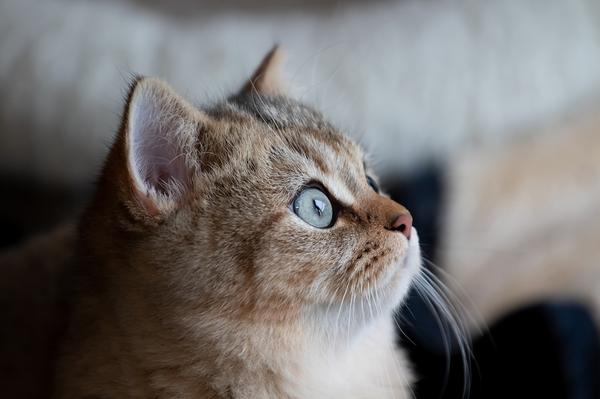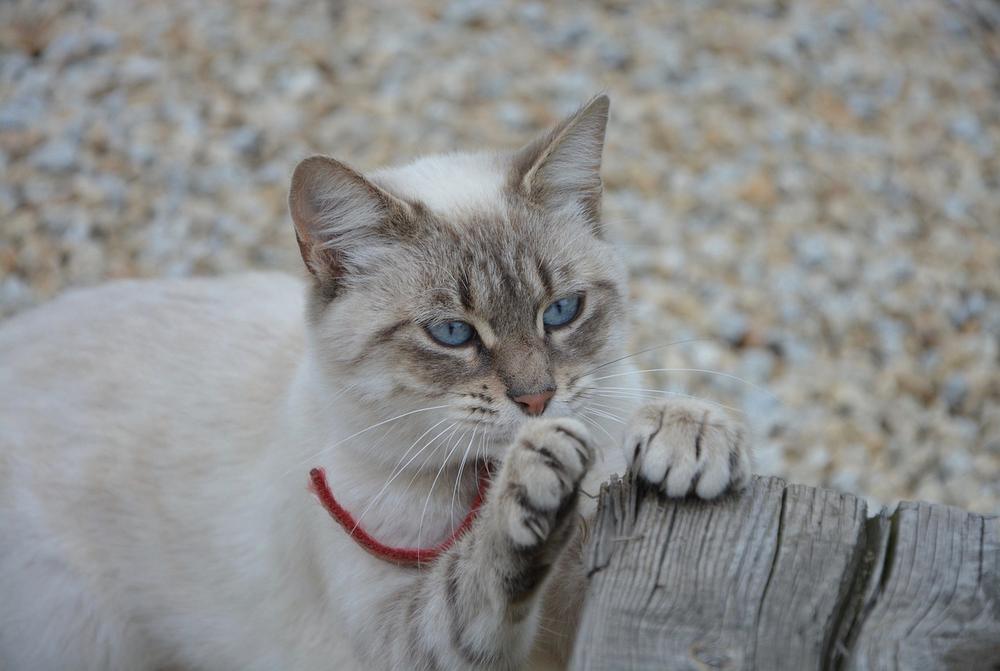Do Male Cats Scratch More Than Female Cats? Yes or No?

Feeling uncertain about understanding cat behavior differences?
Ever stared at your cats and wondered why they scratch at everything in sight? 😺
You're not alone.
We've all had those moments of frustration, imagining our precious furniture torn to shreds by those mischievous paws.
But fear no more!
It's time to uncover the truth.
Let's dive into the scratching behavior of male and female cats, and finally put your uncertainties to rest.
Ready?
Let's begin.
Physical Differences and Scratching Behaviors in Male and Female Cats
Male cats, being larger and heavier, tend to leave deeper marks when scratching. Unneutered males scratch more frequently due to sexual motivations. However, scratching behavior is not solely determined by gender but also by instincts and personality. Male cats are generally more active and may exhibit slightly more aggression.
Do you ever wonder if there's a difference in how male and female cats scratch?
Well, let me tell you.
Male cats tend to be bigger and heavier than females.
And this comes into play when it comes to scratching.
You see, their size gives them more power, leaving deeper marks on surfaces when they scratch.
But here's an interesting twist.
Male cats, especially those that are unneutered or motivated by their sexual desires, actually scratch more often than females.
Now, before you write off the idea of getting a male cat, let me tell you that getting him neutered may reduce the frequency of scratching, although it might not completely eliminate it.
You must understand that scratching behavior isn't solely determined by gender.

It also depends on a cat's instincts and personality.
They scratch for various reasons, such as staying healthy, defending themselves, grooming, exercising, and sharpening their paws.
Now, since male cats are generally more active, they naturally have more opportunities for scratching.
But with increased activity can come slightly more aggression compared to female cats.
Let me jump to another interesting point. There are some physical differences between male and female cats.
As I mentioned earlier, male cats are usually larger and heavier than their female counterparts. This discrepancy in size can affect how they scratch and the depth of the marks they leave behind.
Oh, and let's not forget about fur length.
Believe it or not, the length of a cat's fur can impact the release of allergens into the air.
If you're someone with allergies but still dream of having a cat, consider this: long-haired cats typically release fewer allergens than short-haired ones.
So, if you want to minimize the chances of your allergies acting up due to scratching, a long-haired male cat might be the way to go.
See, finding out all about scratching behavior in male and female cats can help you make an informed decision when bringing home your new feline companion.
Age and Developmental Differences in Scratching Behavior Between Male and Female Cats
Both male and female kittens engage in frequent scratching to develop sharp claws and coordination.
It's a crucial behavior for hunting and climbing, ensuring their survival in the wild.
As kittens grow, they may display uncontrolled scratching and biting, often mistaken as aggression by humans. But fear not.

This is just a natural part of their development and they'll learn to control it over time.
While scratching habits usually begin during kittenhood, they can persist into adulthood. Interestingly, as male cats mature, their scratching behaviors tend to decrease along with territorial marking activities.
So, don't fret if your little furball seems feisty.
It's all just part of being a cat.
Influences of Hormones on Scratching Patterns in Female Cats
Hormonal changes during pregnancy and nursing increase scratching activity in female cats. Their sexual drive can also affect behavior, making nursing females cautious around strangers and leading to more scratching. Spaying and neutering can help address these behaviors.
The topic at hand is the influence of hormones on cat scratching behavior. Female cats, in particular, are affected by hormonal changes that occur during pregnancy and nursing, resulting in increased scratching activity.
Additionally, a female cat's sexual drive can impact her behavior, making nursing females more cautious around strangers and thus leading to more scratching. Moving on to neutered male cats and spayed female cats, they may exhibit cross-breeding behaviors which can be quite intriguing.
Neutered males tend to scratch more to mark their territory and establish dominance, while unsprayed females scratch to protect their space during heat.
However, you should note that individual temperaments and moods can also play a role in the scratching habits of neutered toms and spayed queens.
Just like humans, cats have unique personalities, and factors such as aggression, anxiety, or the desire to mate can contribute to varying levels of scratching.
Thankfully, spaying and neutering can help address these unwanted behaviors.
If you're dealing with excessively scratching cats, it may be worth consulting a veterinarian for advice on spaying or neutering.
Now, let's delve deeper into this fascinating topic - stay tuned!
As I mentioned earlier, hormones play a significant role in a female cat's behavior.
If you're interested in understanding why female cats attack males after mating and gain insights into this intriguing behavior, I encourage you to check out my blog post on Why Do Female Cats Attack Males After Mating.
In this article, I delve into the reasons behind this phenomenon and provide explanations that might satisfy your curiosity.
So, if you're eager to learn more, make sure to give it a read!
Social Factors, Territory Marking, and Scratching Behavior in Cats
| Scratching Behavior | Male Cats | Female Cats |
|---|---|---|
| Communication | Males use scratching behavior as a means of communication, marking territory, and establishing ownership. | Female cats may also use scratching behavior as a form of communication, but to a lesser extent than male cats. |
| Territory Marking | Male cats exhibit dominating and territorial behavior, using scratching and urine spraying to communicate and defend their territory. | Female cats are generally less territorial and may exhibit less frequent and less intense scratching behavior for territory marking. |
| Social Behavior | Male cats tend to develop strong bonds with their owners, particularly women, and are generally more social and affectionate towards both people and other cats. | Female cats may also exhibit social behavior and form bonds with their owners, but their social tendencies and affection may vary. |
Scratching, a behavior that cats just can't resist, is especially prevalent in male felines.
For males, scratching serves multiple purposes. It's their way of communicating and marking their territory, like saying "this is mine!" through visual and scent markings.
Male cats are incredibly territorial, staking claim on their possessions and defending their turf with gusto. They're all about dominating and establishing their presence.
But scratching isn't the only behavior that male cats engage in to assert dominance.
They also take it up a notch by urine spraying.

While it may seem gross to us, for them, it's a powerful tool for deterring intruders and expressing their superiority.
They leave little messages behind for everyone to see (or smell).
Now let's talk about female cats.
Unlike their male counterparts, they aren't as territorial.
They have a more laid-back nature when it comes to marking their territory. Females tend to be less possessive and more social, making it easier for them to coexist with other cats and their human companions.
Speaking of human companions, male cats often form strong bonds with their owners, especially women. They're a bit more affectionate and social, enjoying showering both people and fellow feline friends with attention.
Environmental Enrichment and Its Impact on Scratching Differences in Male and Female Cats
You gotta give cats some good stuff to do so they don't scratch everything up.
Here's what you can do:
- Get them toys and play structures that make them feel like they're hunting.
- Make sure there's enough scratching posts around so they leave your furniture alone.
- Not all scratching posts are the same, so find one that your cat actually likes.
- Male cats need things to keep them active and healthy because they shed their coat from time to time.
- Some cats scratch a lot because of their grooming preference, so give them proper scratching posts instead.
Giving cats ways to have fun and keep busy is important. It helps them relax, stay healthy, and stop destroying things with their scratching. 😺
Understanding the Role of Genetics in Male and Female Cat Scratching
Scratching is a normal behavior for cats, influenced by their genes. Breed, rather than gender, plays a crucial role in scratching tendencies. Understanding your cat's genetic makeup can help unravel the mystery behind their scratching habits and provide insights into their itchiness.
Genes hold sway over how much your cat scratches, plain and simple.
Scratching is totally normal for cats. It's like their claw workout routine.
But here's the thing, my friend - certain breeds may have a natural inclination to scratch because of their genes.
When you're in the market for a new fur baby, remember that breed matters more than gender when it comes to scratching tendencies.
It really does make a difference (trust me).
And it's not just about instinct or attitude, which can vary from one fluffy bundle to another.
Experts say male cats tend to produce more of this stuff called the Fel d 1 allergen.
Look, quirky scratching habits run in the family. Knowing what genetic mix your kitty has could help solve the mystery behind its specific itchiness.
Having this knowledge will help you understand why your beloved whiskered pal goes crazy with scratching.
Tips for Managing Scratching Behavior in Male and Female Cats

To manage scratching in cats, here are some helpful tips:
- Put multiple scratching posts in your home with different materials like sisal rope, carpet, or cardboard - cats have preferences.
- Spay or neuter your cat; it helps decrease the urge to scratch and has other health benefits while controlling stray population.
- Trim your cat's nails regularly using specific cat nail clippers - be careful not to cut the sensitive part inside called the quick.
- To protect furniture or door frames from scratching, try double-sided tape, sandpaper, or plastic wrap as deterrence.
- Before bringing a new cat home, assess their behavior for any tendencies towards excessive scratching.
- Clean and trim your cat's nails regularly to prevent infections, discomfort, and accidental scratches.
- If inappropriate scratching persists, consult a veterinarian or animal behaviorist for additional guidance.
Be patient and consistent when managing scratching behavior in both male and female cats.
Scratching Differences in Male and Female Cats
Key Takeaways:
- Male cats, especially unneutered ones, scratch more than females.
- Neutering can reduce scratching frequency, but not eliminate it entirely.
- Consider the cat's gender when choosing a pet in relation to scratching behavior.
- Scratching helps cats stay healthy, defend themselves, and groom.
- Scratching behavior is not solely dependent on gender, but on instinct and personality.
- Male cats tend to be more active, providing more opportunities for scratching.
- Cats scratch to fulfill various needs and may exhibit uncontrolled scratching as kittens.
- Male cats' scratching behaviors tend to decrease as they age.
- Female cats can be distrustful and cautious, especially when nursing.
- Neutered males and spayed females may exhibit cross-breeding behaviors.
- Neutering reduces the desire to mate but doesn't eliminate marking behavior completely.
- Male cats exhibit dominating and territorial behavior.
- Scratching is a form of communication and territory marking for cats.
- Boredom can lead to increased scratching, provide enough scratching posts.
- Scratching is more common in happy cats, as it relieves stress.
And that wraps up today's article.
If you wish to read more of my useful articles, I recommend you check out some of these: Why Do Cats Hump, Why Your Cat Loves Its Tail Scratched, Cat Digging in the Litter Box, and Why Does My Cat Scratch the Window
Talk soon,
-Sarah Davis